- Administrator
- Albums and Singles

When Sunn O))) first approached Scott Walker about appearing on their 2009 album Monoliths & Dimensions, little did they know what it would actually lead to. Four years on, Scott was back with something even more enticing, collaborating on Soused, a body of work he was writing with them in mind.
Recorded in London in early 2014 and produced by Scott Walker and long-time ally Peter Walsh with the assistance of musical director Mark Warman, Soused is a 5-track 18-minute body of work that cements both acts’ wide-reaching and otherworldly renown.
Out October 20th on 4AD.
More information and a brief trailer can be found here.
Read More
- Administrator
- Albums and Singles
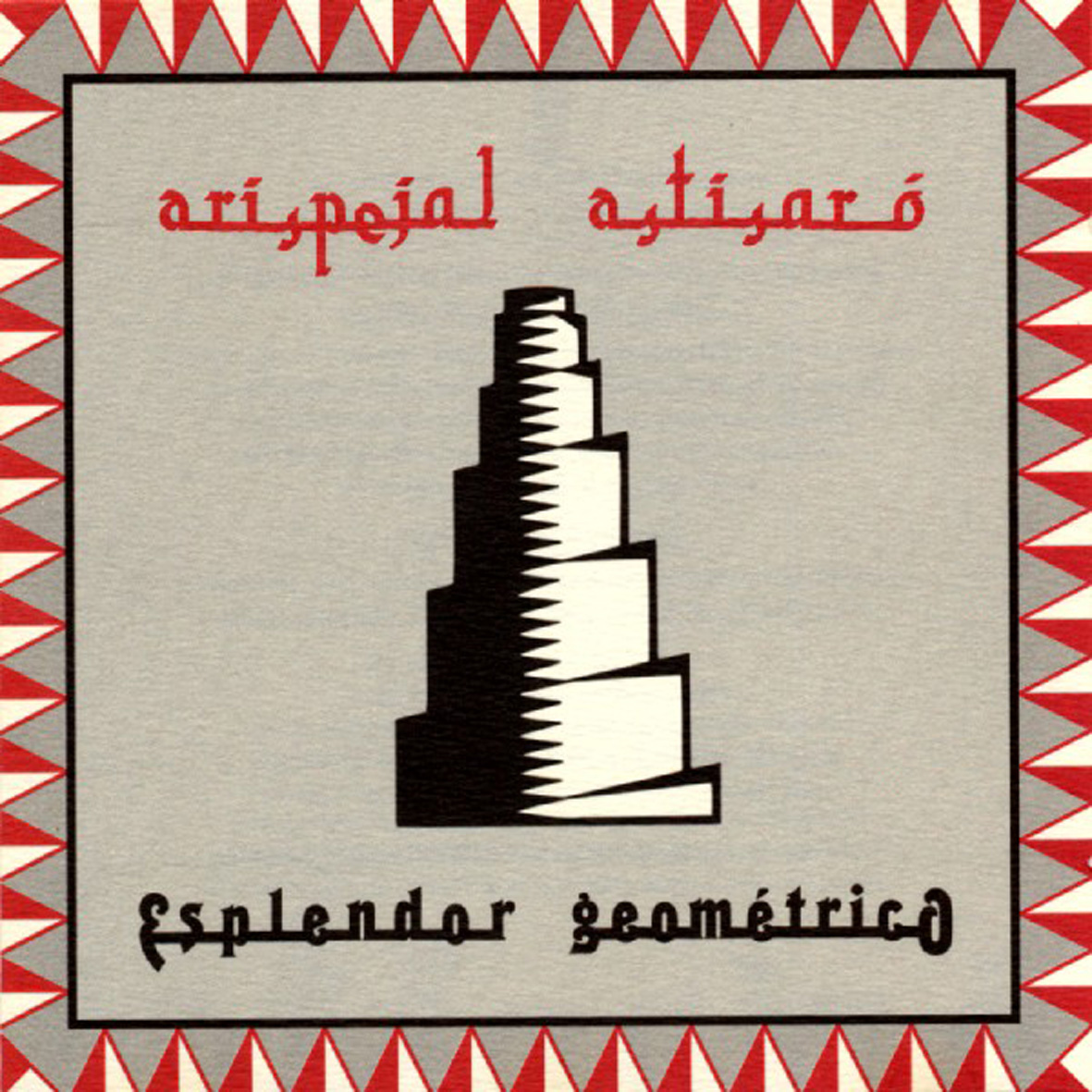
Recently remastered and reissued on their own Geometrik label with radically different cover art and some bonus tracks, this classic 1992 album captures EG in their noisy, rhythmic industrial prime. Like 1991's Sheikh Aljama before it, Arispejal Astisaró flirts with a superficial Middle Eastern influence, but the real draw is its dense and relentlessly punishing machine rhythms. As with many EG efforts, it is sort of a primitive, hit-or-miss affair that largely lives or dies on the strength of its beats, but its highpoints are among the most visceral, bracing, and distinctive works of industrial dance music's brief golden age (and its occasional divergences are even better).
If his albums are any indication, Arturo Lanz does not strike me as a man who is terribly troubled by things like indecision, ambiguity, or nuance.In fact, he often seems more like a machine than a man: a machine that has only an on/off switch (and, at this somewhat early stage of his career, a machine whose settings are all permanently cranked to "10").While that might sound like mere hyperbole, he truly does sound almost inhumanly obsessive and monomaniacal on Arispejal Astisaró.His approach to this album can best be summarized thusly: 1.) devise a compelling rhythm, 2.) execute it with as much brute force as possible, 3.) loop it, and 4.) repeat again and again until there are enough songs for an album.Fortunately, Lanz can be something of a genius within those extremely narrow aesthetic confines, finding many unexpected variations and delivering them all with an appropriate degree of pummeling ferocity.
As stated earlier, the best pieces are almost invariably the ones with the strongest or most inventive rhythms, as Lanz was certainly not concerned with trivialities like hooks, structure, or dynamic variation at this stage in his career.Those rhythms, however, can take some unexpected forms on Arispejal, most notably with the strong opener "Jari," which sounds like an overloaded contact mic recording of a lawn sprinkler taken during an earthquake.Or a recording from inside a downed helicopter during a Blackhawk Down-style urban firefight.I think I will go with the latter.In any case, the most prominent sound is by far the unrelenting sound of the chopper blades (or whatever), but a number of random and mysterious crashes and snatches of garbled voices peak through the stuttering roar to give a menacing and cryptic sense of place.Though Lanz and his collaborator Gabriel Riaza return to similar noisy abstraction again with locked-groove machine noise insanity of the title piece, the rest of the album veers towards significantly more danceable territory.
That certainly does not mean that it would be easy to dance to though.For example, one of the most propulsive pieces ,"Malos Tratos," is frequently disrupted by blood-curdling shrieks, whereas yet another piece ("Felación") awkwardly/comically features some cut-up sex moans.Others are simply just too machine-like, such as the punishing and ferocious clatter of "Bi Bajin," which is also notable for having the most prominent Middle Eastern influence on the album (which is just a chopped and garbled snatch of dialogue).Another dancefloor-killing trait that several sounds possess is a bizarre randomness: while the underlying beat always remains an unstoppable, unchanging force, some of the peripheral noise and percussion stabs seem purely arbitrary and out of time.I am not sure why that could be, as it otherwise seems like EG is a deeply perfectionist project.Perhaps that perfectionism only extends to beat itself, while the roiling entropy above is left somewhat to chance.
Some of the other pieces are more inventive than over-the-top, however, and their presence is what makes Arispejal such a fascinating effort.In particular, I liked "Rab√∫a Aromia," which sounds like a muffled contact mic recording of a telegraph wire during a wind storm.Another stand-out is "Es Inaudito," which combines an oddly timed clanking metallic rhythm with a surprisingly fluid bass line and snatches of breathy female speech.Notably, neither piece is embellished with EG's characteristic maelstrom of blown-out chaos, which makes them surprisingly listenable (and indicative of the direction to come in the future).Then, on the other side of the spectrum, there is the tense and manic bludgeoning of "Ampuchao," which nicely evokes the feeling of frantically running away from a pack of drill-wielding maniacs.
Arispejal is rounded out by a couple of very likable pieces that sound like somewhat muted variations on the standard EG formula."Cataré," for example, takes a slowed-down Latin rhythm and leaves it fairly unmolested except for a distant electronic hum and some occasional thuds and squelches.The closing "Nu Decotora," on the other hand, just unleashes a seemingly basic (but unrelenting) rhythm beneath some moaning, sludgy noise and periodic eruptions from what sounds like downed, sparking power lines.More than any other piece on the album, "Decotora" achieves a hypnotic pulse that remains compelling for its entire duration.As a result, it is deceptively the album's finest piece, as Arispejal's greatest fault tends to be allowing promising ideas to unfold for too long with too little variation: Lanz always does a fine jab grabbing my attention, but does not always manage to hold it.While the obvious, immediate appeal of this record primarily lies in its punishing machine crunch and feral oil-drum rhythms, the pieces that offer the most lasting rewards are mostly the ones where Lanz and Riaza allow their omnipresent veil of crushing density to lift a bit.Consequently, I tend to prefer EG's somewhat more nuanced later work to their work from this "blunt force" period, though I still feel that this is a strong, memorable, and landmark album within EG's discography.
(Note: the 2014 reissue appends four songs from the 1987 Bruitiste compilation on RRRecords, which date from roughly the same time as these recordings: despite being released in 1992, Arispejal was recorded between 1987 and 1989.)
Samples:
Read More
- Administrator
- Albums and Singles
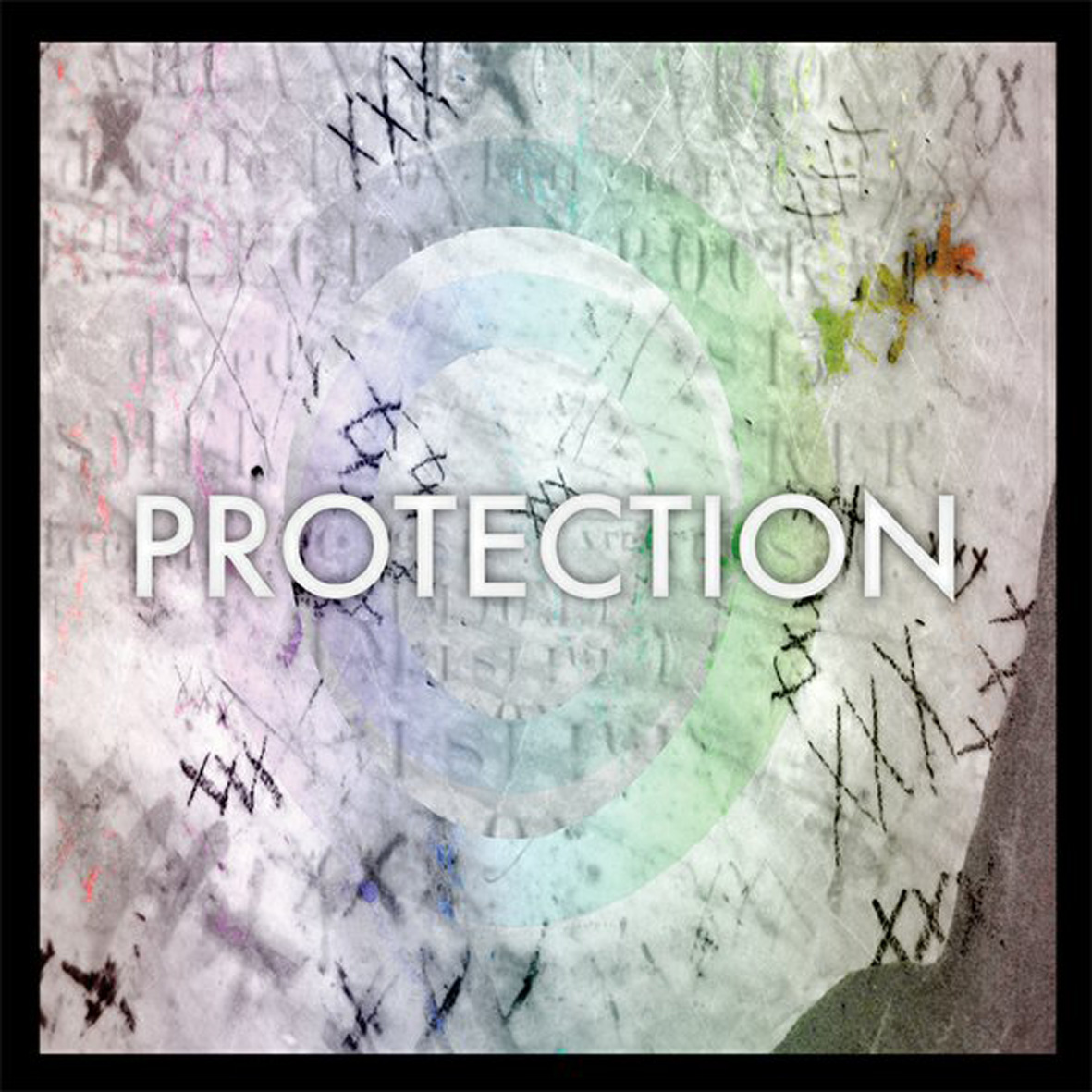 Protection is a long-gestating synth duo consisting of New Orleans' Sam Houston and NYC's Daniel McKernan, the latter of whom has collaborated with both Coil and Cyclobe in the past. Given that pedigree, it is not surprising that this debut EP boasts a distinct Coil influence, but that nocturnal, hallucinatory thread is wonderfully bolstered by both a knack for strong hooks and a guest appearance by the always charismatic Little Annie.
Protection is a long-gestating synth duo consisting of New Orleans' Sam Houston and NYC's Daniel McKernan, the latter of whom has collaborated with both Coil and Cyclobe in the past. Given that pedigree, it is not surprising that this debut EP boasts a distinct Coil influence, but that nocturnal, hallucinatory thread is wonderfully bolstered by both a knack for strong hooks and a guest appearance by the always charismatic Little Annie.
"Prayer" opens this 6-song effort in an ambiguous, mysterious, and deceptively atmospheric way, combining a slow, locked-groove-like pulse with somnambulant, chanted vocals from McKernan that sound like an invocation.It is not a weak piece by any means, but it is certainly an unusual way to start off the record, evoking a phantasmagoric, gently warped, Coil-esque otherness without quite highlighting many of Protection's strengths.As an introduction, however, it works nicely: Houston and McKernan are merely setting the stage for what is to come and what is to come is almost uniformly great.The first evidence of that is the brooding, minimalist synthpop of "Popcycle," which features a strong, obsessive-sounding vocal hook from McKernan over a simple, yet gradually intensifying, bed of darkly burbling synth and a propulsively clattering and thumping percussion loop.As fine as that piece is, it is very nearly eclipsed immediately by the following Little Annie showcase, "Jack/Rabbit," which treads similar, yet slightly more menacing, musical territory beneath Annie's cryptic, disjointed, and layered spoken-word monologue.While it is not quite as hooky and tautly crafted as its predecessor, it more than makes up for it by favorably recalling the bite of prime Annie Anxiety.
Remarkably, the second side opens with a piece even better than anything on the already wonderful first side, as the McKernan-sung "I Worry If You're Warm" sounds like the best song Cold Cave never wrote..or maybe even Depeche Mode.In any case, Protection manage to deliver an absolutely perfect, haunted-sounding synthpop gem that is every bit as hooky and flawlessly crafted as Depeche Mode's best work, but with more gravity, intelligence, and complexity (the latter of which only becomes fully clear when the layers gradually fall away to leave only Christiana Key’s tense violin).The more languorous and shuffling Houston-sung "Before I Was a Man" dips the momentum a bit, but remains likable.  Though "Man" is the only piece where Sam handles lead vocals all the way through, his melodic and soulful vocals are an inspired foil for McKernan's own deadpan delivery throughout the album, popping up again and again for choruses and harmonies. Speaking of vocals, Little Annie appears yet again for the EP's conclusion: a surging reprise of "Jack/Rabbit" remixed by producer Bruno Coviello, Jr. (formerly of Light Asylum).While I probably would have preferred another new piece, it is hard to complain about getting to hear one of the record's highlights return in a heavier, more tensely jittery form.
If this EP can be said to have a flaw, it is simply that I wish there were more songs, as two of the six pieces are either remixes or introductions.That would not normally be exasperating, but Sam and Daniel started recording this effort all the way back in 2011, so it could be quite some time before the duo surfaces again (that translates into roughly one completed song per year).Still, that time was definitely well-spent and I am glad Protection did not pad their debut with any weaker material, as practically everything here sounds like it was painstakingly crafted to absolute perfection–you only get one chance to burst onto the scene, I guess.In any case, I have been playing the hell out of this EP and emphatically believe that "I Worry If You're Warm" is one of the best songs that anybody will release this year.Houston and McKernan have found themselves a truly wonderful niche, as it is truly rare to find synthpop this tough and subtly hallucinatory and even rarer to find experimental music this tightly structured and hooky.
Samples:
Read More
- Administrator
- Albums and Singles
 This material is a series of soundtracks that Rutger Zuydervelt composed to complement Esther Kokmeijer's short films of Antarctica and Greenland, thus fitting in well with this Italian label's frigid, isolationist aesthetic.  Rather than overemphasizing minimalism and emptiness, Zuydervelt instead works in subtle and understated conventional electronic moments in, giving the album a unique feel rather than by-the-book sparseness that could have been.
This material is a series of soundtracks that Rutger Zuydervelt composed to complement Esther Kokmeijer's short films of Antarctica and Greenland, thus fitting in well with this Italian label's frigid, isolationist aesthetic.  Rather than overemphasizing minimalism and emptiness, Zuydervelt instead works in subtle and understated conventional electronic moments in, giving the album a unique feel rather than by-the-book sparseness that could have been.
The two "(Chinstrap)" pieces are the ones that most closely resemble traditional soundtrack compositions.  The first version balances marimba like melodies over simple electronics, and soon the piece is fleshed out via the addition of droning, expanding string sounds.  The second features piano and nature sounds in addition to the strings and also has a very standard "opening credits" feel.
The five remaining pieces, however, are not as easily classified.  An ominous hum features heavily in "Stillness #1", which would fit in easily on one of the isolationist compilations of the mid 1990s.  When a simple, but forceful, pulsing kick drum comes in, however, the piece sets itself apart from other similar ones.  "Stillness #2" also has Zuydervelt mixing in a fuzzy drum-like track with a vinyl crackle to give a sense of rhythm, balancing out the especially hushed second half.
"Stillness #4" turns the volume up somewhat, having a more traditional electronic sound amid deep bass pulses and echoing reverberations.  The more conventional approach is paired with a dissonant, fuzzy texture and crackling layers to balance out the normalcy, resulting in a strong stylistic pairing.  "Stillness #5" also is a bit more tied to convention in its overall instrumentation.  Gliding bass tones give it a rich, heavy low end, but synth strings make for another more traditional soundtrack approach as a whole.
I was expecting more of a standard ultra-minimalist isolationist sound to Stillness Soundtracks, and I was pleasantly surprised how Zuydervelt mixed in some more conventional elements and rhythms that keep it from being too stagnant or predictable.  The overarching glacial feel is clearly present in these recordings, but through the variation injected into them, it is anything but off-putting.
samples:
 
Read More
- Administrator
- Albums and Singles
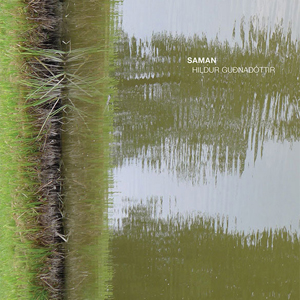 The Touch label's extensive roster only has a few artists who would be considered classical in the traditional sense, and Hildur Gudnadottir is one of those.  With instrumentation consisting only of her cello and her voice on some of these pieces, and guest musician Skuli Sverrisson on bass for one of them, Saman is a stripped down affair that excels at what it intends to do, but does not step out of that comfort zone either.
The Touch label's extensive roster only has a few artists who would be considered classical in the traditional sense, and Hildur Gudnadottir is one of those.  With instrumentation consisting only of her cello and her voice on some of these pieces, and guest musician Skuli Sverrisson on bass for one of them, Saman is a stripped down affair that excels at what it intends to do, but does not step out of that comfort zone either.
The best pieces on this album are the ones in which Hildur pairs her voice with the cello, rather than just focusing on the instrument only.  "Heyr Himnasmiður," for example, sparingly uses both the strings and her voice, but the dramatic shifts in dynamic from near silence to pure, rich tone is brilliant.  This excellent use of silence to magnify the sound appears again on "Líður," immediately leading off with multi-tracked vocals and cello, but returning into silence throughout the composition.
"Heima," featuring Skuli on bass, benefits from the inclusion of the additional instrumentation, with plucked strings and additional reverb (the cello playing being resonated through two grand pianos) adding a bit more complexity.  The piece is soft, but a bit too busy to be peaceful, which keeps it interesting and helps it to stand out.  The final composition, "Þoka," is the odd one out, with a heavier sound and buzzy, less clean sounding strings, but is all the more memorable for that difference.
Shifting dynamics work extremely well on "Strokur" too, with forceful and deliberate swells of cello that go from loud to quiet and back, with high and low register notes that encompass the full sonic spectrum.Hildur maintains a slow pace on "Birting," filling out the mix with some subtle layering and looping, for the most part the only overt processing used on this album.On "Í hring," however, she pairs the low register drone that a cello can do so well with lighter, more melodic sounds a bit further in the mix.  The dynamic does not shift drastically, but remains light and spacious throughout.
Saman is an album rich with Hildur Gudnadottir's subtle cello and hushed voice, that delicately lingers for the 40 minute duration.  It accomplishes this very well, but I wish there would have been a few more experimental or challenging moments that would stand out.  The pieces where her voice is prominent, or a less traditional approach is used in the performance are the ones that are the most memorable.  The other moments are pleasant, but are not quite as effectively captivating.
samples:
 
Read More
- Administrator
- Albums and Singles
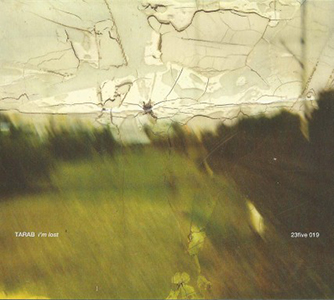 The title of this Australian artist’s latest album is extremely fitting.  Passages of roughly edited tape, collages of indecipherable found sounds, and bizarre production is disorienting at best, and downright baffling much of the time.  It is because of this confusing, jarring, and sometimes frightening nature that the disc works so well.
The title of this Australian artist’s latest album is extremely fitting.  Passages of roughly edited tape, collages of indecipherable found sounds, and bizarre production is disorienting at best, and downright baffling much of the time.  It is because of this confusing, jarring, and sometimes frightening nature that the disc works so well.
This is my first experience with Eamon Sprod’s work, so I was not fully sure what to expect past the initial sound clip that I heard.  Of course, the intentionally vague (yet beautiful) artwork does nothing to elucidate things much, something I doubt was an accident.  The first of the five untitled compositions is an appropriately forceful introduction, and is gripping to say the least.Very lo-fi field recordings are paired with white noise bursts and subsonic bass that pummels through a jerky stop/start jump cut editing, and this is just the first 30 seconds.  Mechanical clattering, birds chirping, a passing train and what could be a tape recorder left in an oil drum as it rolls down a steep hill appear in the following five minutes.
The middle pieces are a bit less chaotic, but only marginally so.  The second is largely built upon hollow hums and ghostly scrapes, occasionally interrupted by a razor sharp outburst or crackling texture that builds to an aggressive jet engine roar before pulling back to a dull hum.Sprod mixes subsonic bass and jump cut noise for a chaotic opening of the third piece before scaling back to an ominous rattle that stays more consistent through the remainder of the composition.
The final two pieces are more akin to opening in terms of frenetic noise and pure dissonance.Eamon uses static bursts and digital edits effectively on the fourth piece, mixing up the shimmering harsh noise and crackling textures.  Paired with the unidentifiable junk found sounds, Sprod shifts between pensive ambience and abrasive chaos at a ridiculous pace.  The final piece might begin at a low volume crinkling, but what could be a microphone scraped on a gravel driveway prevents it from being anything but ambient.  Distant talking and cricket chirps might sound peaceful, but violent clattering noise is anything but.
The absurdist, junky noise collages of I’m Lost reminded me of Sudden Infant or Runzelstirn & Gurgelstock’s work, but without the organic, occasionally nauseating component both Joke Lanz and Rudolf Eb.er are fond of exploiting.  The harshness, aggression and unpredictable production is consistent with that scene though. Violent, sometimes unpleasant, and infrequently introspective, I’m Lost is a schizophrenic, but brilliant mass of sound.
samples:
Read More
- Duncan Edwards
- Albums and Singles
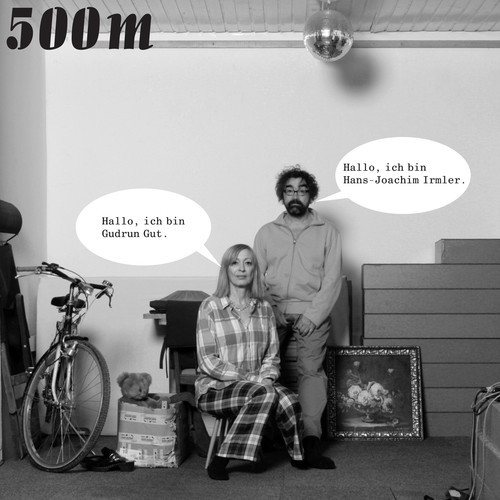 500m beautifully combines Gudrun Gut’s programmed percussion and editing discipline with Jochen Irmler’s meandering organ playing and natural spontaneity.
500m beautifully combines Gudrun Gut’s programmed percussion and editing discipline with Jochen Irmler’s meandering organ playing and natural spontaneity.
This album comes from two sessions recorded in the autumn of 2013, at the Faust studio in Scheer. These consisted mainly of Irmler leading, by improvising some tracks for as long as thirty minutes, with Gut providing basic beats and a rudimentary framework and mood. Later, in her Berlin studio, she reassembled, deconstructed, and refined the session tracks into shorter pieces. Irmler kept his distance, hearing the progress of her work via file sharing. This creating-at-a-distance should not have been a problem for him, not at least if the story is true that in the early days of Faust he had a cable run from his bedroom so he didn’t have to come into the studio, and could even play while in bed. Perhaps it is no coincidence that Gut appears to be wearing pajamas on the cover artwork. In any event, the splendid contrast between her whispered, breathy, vocals, and shards of drum programming, echo, clipped and spliced or untreated keyboards, all combine to produce a landscape suggestive of darkness and twinkling stars.
Searching for clues to 500m through attempts to translate the German names of some individual tracks into English, threw up such titles as "Perfume," "Noah," "Chlorine," "Fracture," and the amusing chronology of "Tangerine," followed by "Dream." Listening to the record made me feel as if I were dreaming of walking alone through a series of rooms in a huge deserted factory, hearing the sound of echoing footsteps and machines briefly bleating into life or fade into silence. The title relates to the fact that Gut reported feeling dizzy the whole time - which Irmler explained may have been due to them being 500m above sea level.
 
Read More
- Administrator
- Albums and Singles
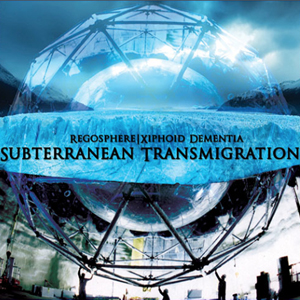 As a split release with each artist submitting three pieces, the pairing is perfect.  The two projects share similar aesthetics and aptitude in their own take on modern industrial music.  Even though their individual work is clearly distinct from each other, the two fit together very well into a cohesive whole.
As a split release with each artist submitting three pieces, the pairing is perfect.  The two projects share similar aesthetics and aptitude in their own take on modern industrial music.  Even though their individual work is clearly distinct from each other, the two fit together very well into a cohesive whole.
Of the two, Regosphere (Andrew Quitter) leans a bit more towards the rawer, noise tinged sounds on his three compositions.  A pulsing synth and shrill digital noise of "Psychic Surgery (Second Procedure)" are paired with a heavily churning bass line that is not quite harsh enough to constitute power electronics, but certainly leans in that direction.  The harshly processed and destroyed vocals push this even further, even though they are completely indecipherable.
Quitter dials the harshness back a bit on "The Devil’s Icebox," keeping the bleeping electronics but adding in an overdriven kick drum passage.  The monotone thud is offset by dramatic, complex layers of electronic and what almost sounds like prog rock keyboard progressions.  "Coffin Dust" draws more from sound effect bits and an overall messier sound without ever becoming too dissonant.  Compared to the previous two Regosphere pieces, this one feels a bit less focus or structured but still works in its own way.
On his half, Egan Budd (Xiphoid Dementia) utilizes metal and junk percussion throughout, to excellent effect.  The slow build of "Despondency Aquifer" leads in with a rumbling bass drone and dramatic sweeps of noise that, at this point, are more understated than Regosphere’s work.  The piece eventually expands amongst obvious synths and tolling digital bells with overdriven percussion.  The final result lies somewhere between a modernized take on SPK’s Information Overload Unit and the best moments of early Dissecting Table.
Budd strips things down a bit on "Beneath the Foundation," pairing gentle ambience with crunchy, overdriven waves of noise.  With the junk percussion thrown in, it feels consistent with the previous piece, but in a less musical sense overall.  Musicality also takes a back seat on "Mineral Resurrection," as Budd places the percussive clanking and banging in a subterraneous cavern expanse.  Drifting through the heavy reverb, a sense of malignance looms during the more restrained minutes.  Slowly the piece builds to an explosion of distortion and harshness, resulting in an appropriately explosive climax.
Regosphere and Xiphoid Dementia share a lot of commonalities, but each stands on their own.  On this disc the former brings the harsher noise electronic sound, while the latter’s emphasis on junk percussion embraces that Einstürzende Neubauten/Test Department aesthetic, but within a more electronic framework.  It manages to be one of those split releases where two different halves mesh together brilliantly into a coherent and fully realized whole.
samples:
- Despondency Aquifer (Xiphoid Dementia)
- The Devil's Icebox (Regosphere)
- Beneath the Foundation (Xiphoid Dementia)
 
Read More
- Administrator
- Albums and Singles
 As one of the major triumvirate of Italian power electronics (alongside Atrax Morgue/Marco Corbelli and Mauthausen Orchestra/Pierpaolo Zoppo), Moreno Daldosso has not released any new material in over a decade, and Der Totenkopf may be his final recording. With his two peers no longer with us, this record serves as an epitaph for this distinct group of artists, and it fits right in amongst the best of those albums.
As one of the major triumvirate of Italian power electronics (alongside Atrax Morgue/Marco Corbelli and Mauthausen Orchestra/Pierpaolo Zoppo), Moreno Daldosso has not released any new material in over a decade, and Der Totenkopf may be his final recording. With his two peers no longer with us, this record serves as an epitaph for this distinct group of artists, and it fits right in amongst the best of those albums.
The three aforementioned artists are essentially the antecedents of Maurizio Bianchi's first period of activity, albeit with different aesthetics.This subgenre has always heavily utilized serial murder, necrophilia, and Third Reich, making for an essentially perfect mirror image to Italy’s contribution to international cult film:giallo, zombie, and Naziploitation.In an appropriate parallel to the films, however, the use seemed to be to invoke horror rather than political ideology.
Der Totenkopf is no different, and Daldosso makes no attempt to hide the theme based on the cover art alone.Unlike Atrax Morgue or Mauthausen Orchestra, however, the two pieces that make up this album are not heavily steeped in harsh analog synthesizers, but instead hollow, cavernous layers of minimalist noise.The undeniable sense of gloom and depression (which can be traced back to Bianchi's earliest experiments) does pervade this record though, another hallmark of the Italian school of harsh electronics.
On the A side, bits of the German marching music that acts as the primary source material slips through in shards, echoes and delays stretching the only recognizable sounds out into the murky, muddy expanse of sound.The flip side showcases the source material more, with obvious fragments of horn fanfare stretching out from a hollow, reverberating electronic din.Throughout the gray monochromatic ambience, what sounds like the stomping of boots create some rough semblance of rhythm via loops and delay that always stays just a bit uncomfortable and off kilter.
Rather than the harsher sound I expected, Murder Corporation emphasizes menace and restraint in his bleakness.The moroseness of this record cannot be understated, just like the best records from this roughly defined scene.It might not be a record I will play every day, but when the mood strikes, Der Totenkopf hits all the right buttons.
samples:
 
Read More
- Administrator
- Albums and Singles

I hate to use the phrase "return to form" to describe this album, as I have enjoyed most of Lawrence English's divergent recent efforts quite a bit, but Wilderness of Mirrors reminds me favorably of the darker, heavier albums that brought him to my attention in the first place (such as Kiri No Oto and It's Up To Us To Live).  Characteristically, English also offers an intriguing concept on Wilderness, but the primary appeal is simply that it is wonderful to finally get another substantial offering of what he does best.  That said, this effort does offer a few surprises, as Lawrence has picked up a few neat tricks from folks like My Bloody Valentine and Swans since he last surfaced in heavy drone mode.
Wilderness of Mirrors borrows its name from a line from T.S. Eliot's darkly ruminative "Gerontion," but in sort of a second-generation way, as the phrase was re-purposed during the Cold War to describe campaigns of deliberate misinformation.  That second use is what inspired the structural aesthetic of Wilderness, as each piece features a buried motif that has been fed back into itself to the point of unrecognizability.  That said, neither those endlessly mirrored loops nor English's increased appreciation for the power of volume and density were particularly conspicuous or revelatory parts of my actual listening experience, except in the case of the crushing and ominous "Another Body," which sounds like the slow-motion collapse of a mountain or a city.  For the first few minutes, I could not believe that such seismic ruin could be coming from a Lawrence English album, but "Body" gradually becomes more traditionally English-esque as it progresses and the rest of the album does not depart all that much from Lawrence's previous work (though it is noticeably scarier in places than I would have expected).
Of course, I still enjoy that traditional "Lawrence English aesthetic" very much, so I was not disappointed that the remaining surprises were comparatively minor.  That is not to say that English has not evolved noticeably–rather, bluntness just is not a Lawrence English trait, so the enhanced sizzle and frequency-saturation of pieces like the wonderful "Forgiving Noir" are probably only apparent to those of us actively looking to notice such things.  In most other respects, Wilderness is simply an enjoyable return to the rich vein of previous excellent Lawrence English drone albums, offering up a heavy, slightly distorted thrum that vibrantly pans and undulates and never sinks into dull stasis or straightforwardness.  To his everlasting credit, English is never content with simple oceanic, immersive density: there is always something deeper happening melodically, harmonically, or texturally.  A prime example of English's mastery in this regard is the opening "The Liquid Casket," which evolves from ominous feedback to a restrained shoegaze roar that gradually fills with uneasy dissonances and harsher metallic sounds, evoking a pile of rusty knives being dragged by a slow-motion tidal wave of molasses (or especially viscous blood).
If Wilderness has a flaw, it is that it moves a long a bit too quickly for my taste, as there are several 2- or 3-minute pieces amidst these 8 songs.  For example, the title piece feels like just a brief extension of "The Liquid Casket" and the following "Guillotines and Kingmakers" is a mere 2-minute interlude of dark ambient atmosphere.  While the segue between "Guillotines" and "Another Body" is admittedly quite a deft and striking one, it still basically feels like Wilderness goes right from the opening piece to already being halfway over, barreling through two transitional pieces before I even realize that they are happening.  While I do think English did a fine job with the sequencing, I also feel like Wilderness is basically just three (or so) great, fully formed pieces and a whole lot of transitional, incidental music and falling action.  As a result, Wilderness feels more like a stretched EP than a truly solid album, so it does not quite stand with English's best work as a whole.  When taken on a song-by-song basis, however, Mirrors boasts some of the most powerful and distinctive individual pieces of Lawrence's career.
 
Read More
- Administrator
- Albums and Singles
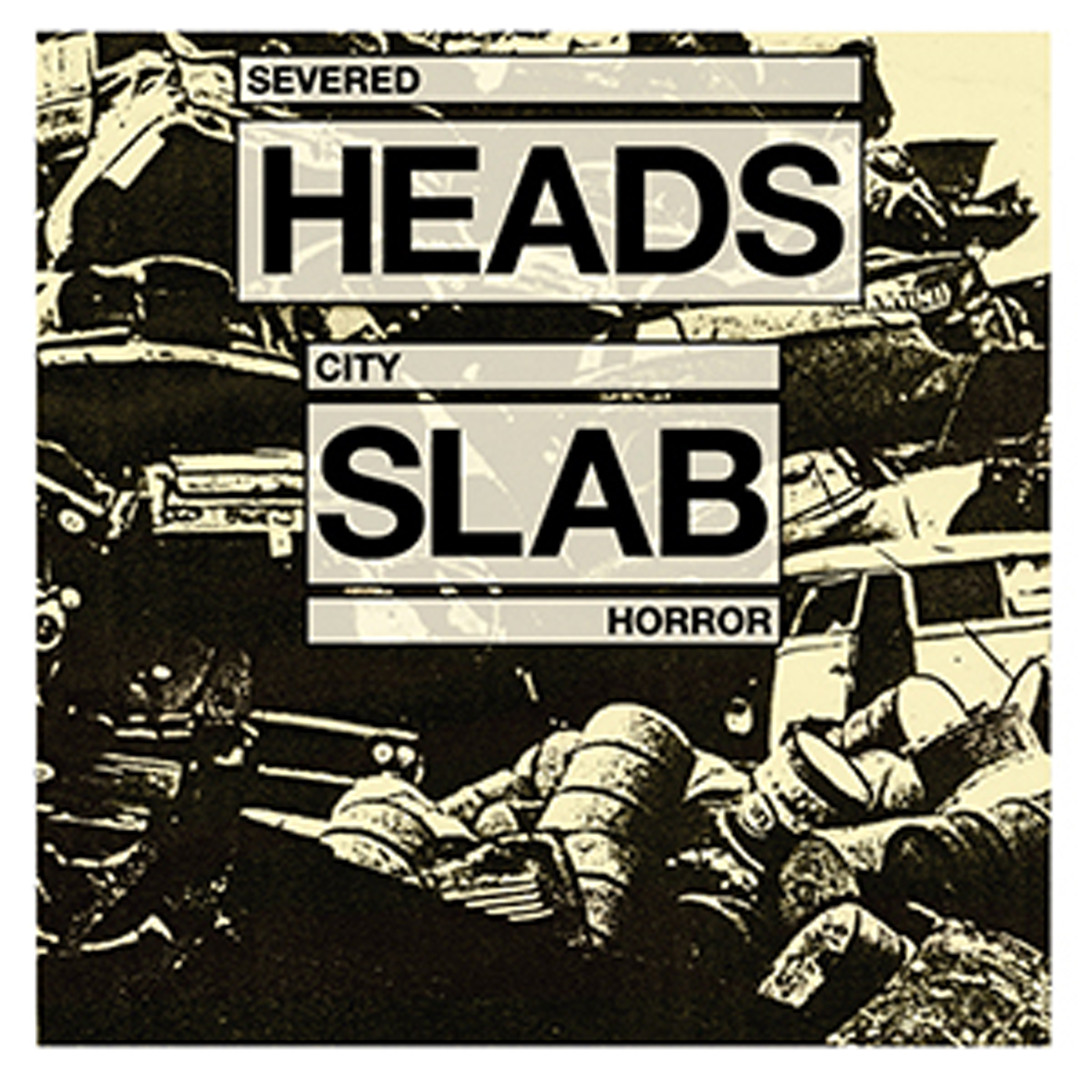 Much to my delight, Medical Records has recently reissued two of the arguable jewels of the Severed Heads' discography: 1983's Since the Accident and this effort from 1985.  Both hail from the transitional period between the messy, contrarian experimentalism of the band's early years and Tom Ellard's later forays into more conventional electronic pop.  While City Slab Horror lacks anything like a hit single (Accident had "Dead Eyes Opened"), it is actually the more listenable of the two releases, finding a fine balance between Ellard's more perverse and absurdist tendencies and actual beats and hooks.  Naturally, the primitive technology employed sounds rather dated thirty years later, but Ellard's distinctive eccentricity remains as charming as ever.
Much to my delight, Medical Records has recently reissued two of the arguable jewels of the Severed Heads' discography: 1983's Since the Accident and this effort from 1985.  Both hail from the transitional period between the messy, contrarian experimentalism of the band's early years and Tom Ellard's later forays into more conventional electronic pop.  While City Slab Horror lacks anything like a hit single (Accident had "Dead Eyes Opened"), it is actually the more listenable of the two releases, finding a fine balance between Ellard's more perverse and absurdist tendencies and actual beats and hooks.  Naturally, the primitive technology employed sounds rather dated thirty years later, but Ellard's distinctive eccentricity remains as charming as ever.
Notably, Severed Heads was still sort of an actual band rather than a one-man show during the recording of City Slab Horror, as the album was primarily a fraught collaboration between Ellard and new member Paul Deering.  Admittedly, Deering was a surprising choice as a bandmate, as he was more interested in making crunching industrial music, while Ellard was intent on taking the band in a more "skewed electronic pop" direction.  Also, the name "Severed Heads" was originally chosen as a joke, as Ellard and some of his former bandmates thought it would be hilarious if people thought a bunch of Australian weirdos from the coastal suburbs were scary industrial provocateurs.  While these sessions unsurprisingly ended in a screaming match and Deering moving away, Paul's influence on the album is pleasantly evident in the thudding, obsessive drum machine rhythms of pieces like "Ayoompteyempt" and the swaying, sea-sick menace of "Spitoon Thud" and "Voices of the Dead."  Despite that unsustainable situation, the band's two wildly disparate directions actually do not sound all that schizophrenic at all here and actually make for an intriguingly varied and unpredictable album.
Of course, the most memorable pieces are still Ellard's fledgling stabs at something resembling pop, the best of which is probably the buoyant and upbeat "4.W.D.," which is seemingly the only song that Ellard himself sings on the album.  Though it boasts a propulsive enough beat, pleasant sing-song melody, and charmingly clunky synth hook, the true appeal lies in how wrong it sounds when compared to the sophisticated synthpop that folks like Human League and O.M.D. had already been putting out for years.  Somehow "4.W.D." manages to seem naively childlike, effortlessly aberrant, and gleefully self-sabotaging at the same time, as if Ellard was completely unaware that his contemporaries were miles ahead of him in both technology and songcraft and believed that his own ramshackle, primitive, and surreal pop song about a jeep ripping through his chest was perfectly relevant and marketable.  Of course, he was aware and just did not care, though his later albums would show a definite move towards more conventional sounds (even if his core sensibility largely remained completely out of step with the rest of the world).
City Slab Horror offers up a few other attempts at pop and dance as well, with varying degrees of success.  My favorite of the bunch is the thumping, Garry Bradbury-sung "Now, An Explosive New Movie," which still sounds like a sure-fire floor-filler at an industrial dance night (despite its dated fake-horn stabs).  The album's single "Goodbye Tonsils" is another delightful song, embellishing a somewhat rudimentary synth melody with all kinds of skittering, stuttering chaos and movie samples (and some more help from former member Bradbury).  "We have Come to Bless This House" treads quite similar territory, but does so in a more cheerily plodding way that can best be described as "gloriously '80s."  The surprisingly aggressive industrial dance of "Cyflea, Rated R" is yet another classic of sorts, though it actually sounds much more like Skinny Puppy or something than like Severed Heads, despite the chopped-up, gibbering samples.
There are also a handful of songs that do not sound like either low-budget, garage synthpop or industrial soundscapes and those odd experiments are what elevate the album into something special for me. In particular, I like "The Bladders of a Thousand Bedouin," which is a squelching, clattering, and obsessively repetitive tape-loop (or sampler) experiment.  Another minor gem is "Guests," which weaves a sublime spell with floating, ghostly swells of choral samples.
That said, City Slab Horror does not actually boast a single song that I love, just a disproportionate number of songs that I like.  That is part of what makes this album so unique in Ellard's discography, as I have always found him to be a very hit-or-miss artist, just as capable of being absolutely brilliant as he is of being absolutely annoying.  As a result, there are very few Severed Heads albums that I enjoy in their entirety–probably just this one, Cuisine, and perhaps Since The Accident.  In any case, City Slab Horror is a memorably bizarre and unique album that documents a particularly fertile, adventurous, and messy period in Ellard's evolution in which he was still heroically deviant and inventive, yet hugely limited by the gear available to him and still figuring out where he wanted to take the project.  Extreme limitations seem to yield remarkable results sometimes and this is one of those instances: while it certainly sounds both primitive and dated in 2014, City Slab Horror also sounds dramatically more distinctive, deranged, vibrant, and memorable than anything released by most of Ellard’s better-known contemporaries.  It is not seamless and it is not pretty, but it is certainly still compelling.
(Note: previous versions of this album feature some bonus tracks from Blubberknife.  They are a likable addition, but do not strike me as particularly essential.)
 
Read More

